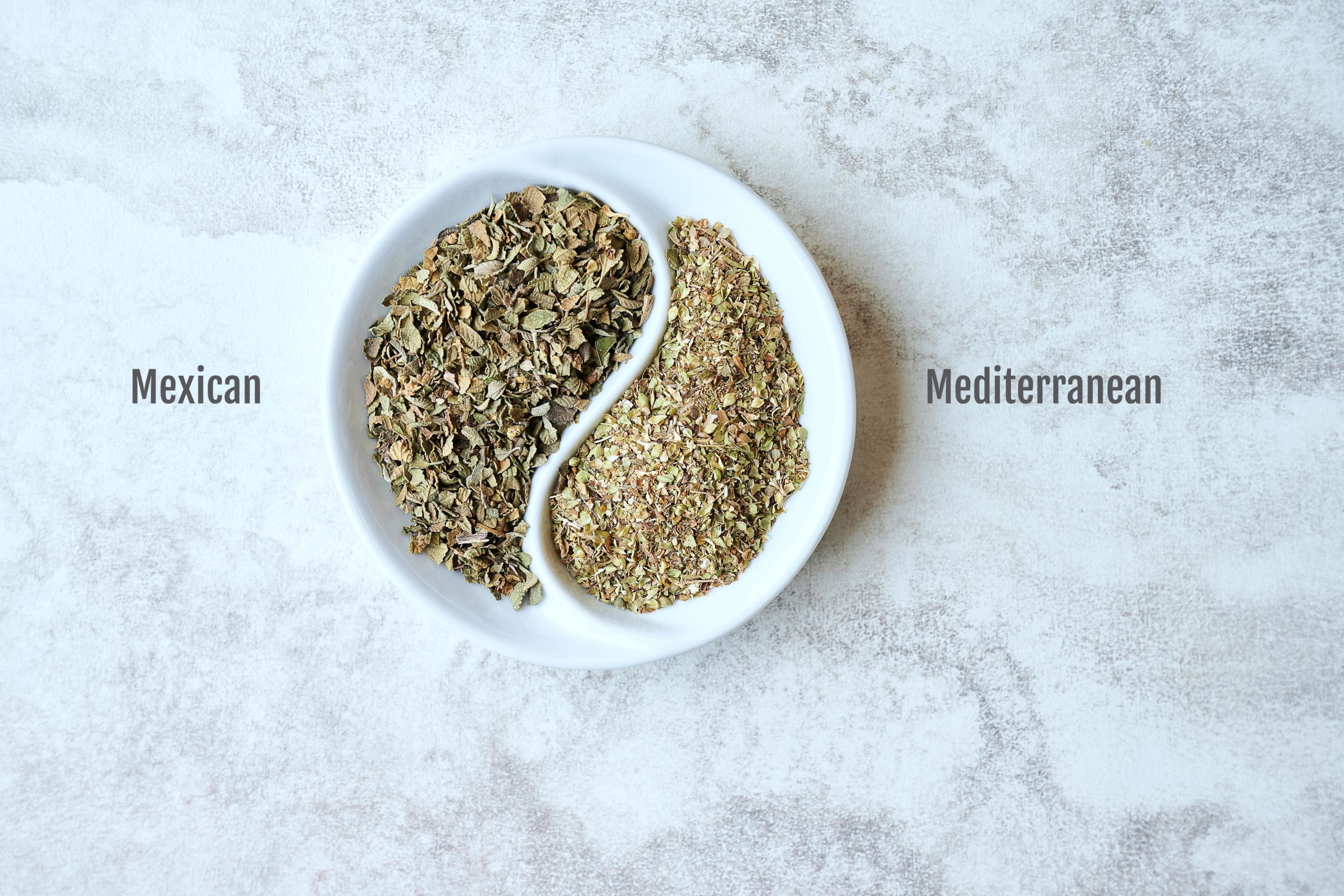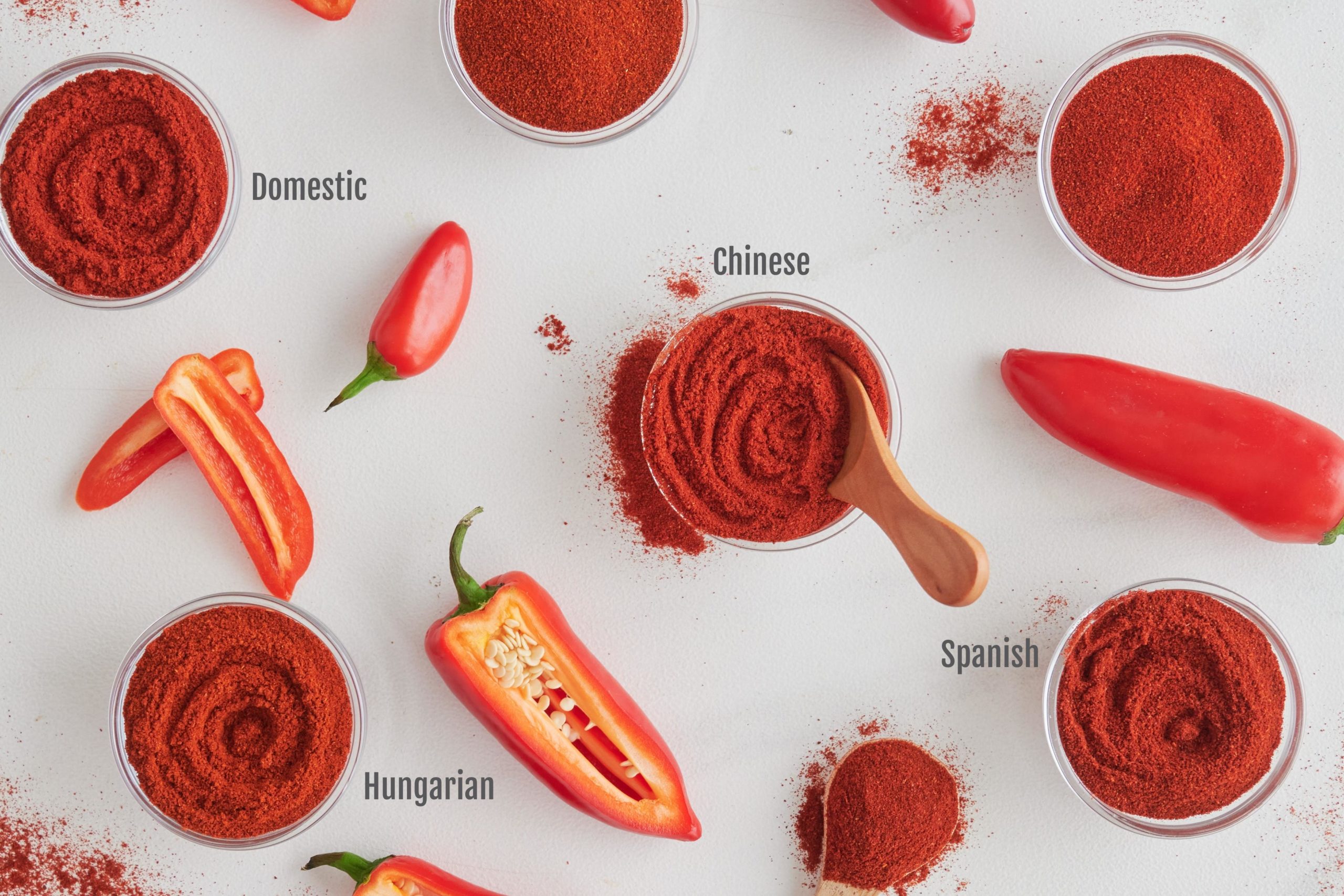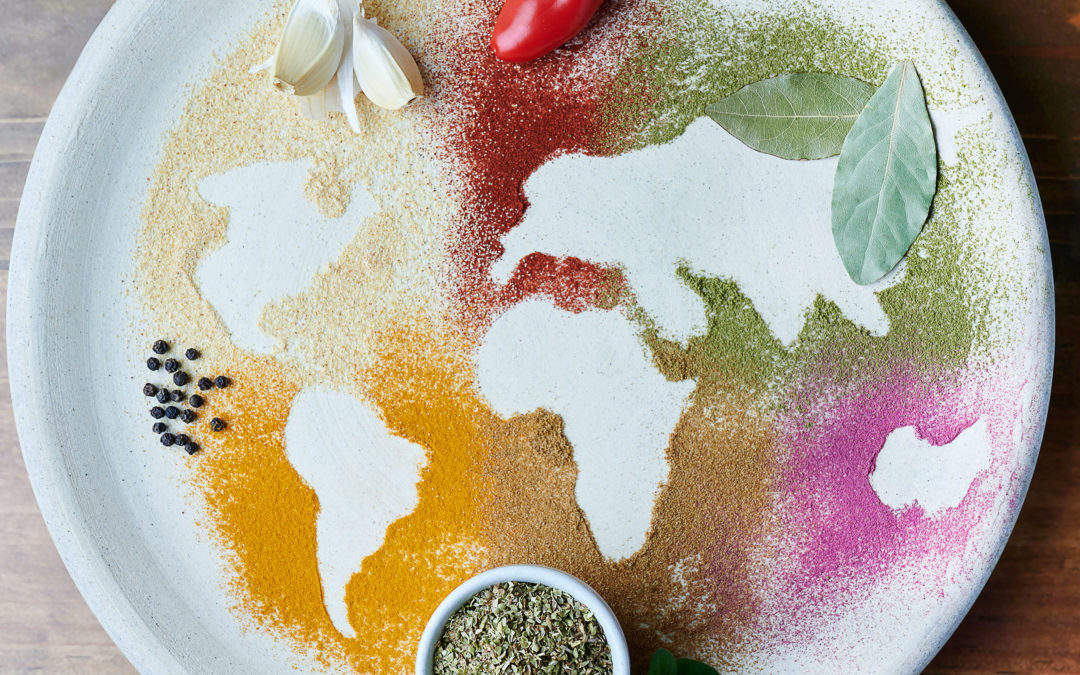Throughout the world, the same spice can originate from and grow in different places, and each origin can taste a bit different from the next. If you’re in the food industry, this education is worth your time. Because when you familiarize yourself with the flavor differences that exist within the same spice, you empower yourself to choose the exact variety that will best enhance the flavors of your dish.
In this blog, we’re highlighting three spices, their various origins, and the flavors that set each one apart. Keep reading to learn what makes Mediterranean Oregano different from Mexican Oregano; what differentiates Domestic, Chinese and Premium Chinese Garlic; and what makes Domestic, Chinese, Hungarian, and Spanish Paprika each unique in their own way.
Types of Garlic
Domestic | Premium Chinese | Chinese

With a complex history in folklore, supernatural rituals, herbal medicine, and culinary uses, garlic is one of the oldest known horticultural crops and is a long-studied and revered spice across continents.
Garlic belongs to the genus Allium, the same family that also includes onions, leeks, shallots, and chives.
Garlic is cultivated around the world today, but it originated in Western Asia. The flavor of garlic depends on the origin and variety of the plant. Let’s examine the differences in flavor within this spice family; from Domestic Garlic (grown primarily in California), to Chinese Garlic, and Premium Chinese.
Domestic Garlic
Origin: California
California-grown Garlic has a naturally high sulfur content which drives its dynamic flavor. This product is known for its high quality and complex, smooth, mellow taste which generally comes at a higher price tag.
Chinese Garlic
Origin: China
Although Chinese Garlic is priced lower than Domestic, it’s still great quality. It has a hotter, more biting flavor that is often preferred for cooking, sautéing, and roasting because of its intense depth of flavor.
Premium Chinese Garlic
Origin: China
This variety is a higher-quality Chinese garlic that is priced midway between Chinese and Domestic. With a smooth flavor more similar to Domestic, this variety is a great, cost-effective alternative to Domestic Garlic.
For more information on garlic, read: Garlic: A Review of the Esteemed, Ancient Spice
Types of Oregano
Mediterranean | Mexican

Oregano is a delicious addition to dips and salads and the perfect leafy garnish for soups and tacos. In some parts of the world, oregano is even used as an herb in teas!
While you may be familiar with this fresh and fragrant herb, did you know that Mediterranean and Mexican Oregano are actually quite different? While Mexican and Mediterranean Oregano share the same name, they are from entirely different plant families and have distinctively different flavors.
Mexican Oregano comes from a flowering plant in the verbena family, Lippia graveolens, while Mediterranean oregano comes from a plant in the mint family, Origanum vulgare.
Mediterranean Oregano
Origin: Turkey, Italy, Greece, France, Morocco, Israel
As part of the mint family, Mediterranean Oregano has a flavor that’s somewhat reminiscent of rosemary, with fresh, minty undertones that pair perfectly with Mediterranean dishes. It’s great for sauces, salad dressings, and brushing on meat before grilling.
Mexican Oregano
Origin: Mexico
Mexican Oregano comes from the same plant family as lemon verbena, which gives its flavor a similar citrus undertone. With a peppery, woodsy flavor that resembles marjoram, Mexican Oregano has a stronger, more intense flavor that pairs well with Mexican and Tex-Mex cuisines. Try it on chile con carne, mole, burritos, salsa, stews, tacos, and meats.
Types of Paprika
Domestic | Chinese | Spanish | Hungarian

The Capsicum annuum plant is believed to have originated in Mexico; however, this iconic crimson red powder is now grown throughout the world, with the most popular paprika-producing countries being Spain and Hungary.
For its red color and easy blend-ability, paprika is used as a staple ingredient in many spice blends. When extracted into an oleoresin, it is deep red in coloration and is used as a natural alternative to artificial dyes.
From smoky to sweet and mild, paprika is a bright and bold kitchen staple with a range of flavors and culinary applications. Paprika is particularly popular in Hungarian cuisine, and is the cornerstone spice in their traditional dishes (such as goulash).
The taste of paprika is not homogenous, and has a range of flavor depending on differences in variety, origin, and preparations of this spice.
Domestic Paprika
Origin: U.S.A.
With its rich, chili notes and aroma, Domestic Paprika is deep red, mild, and sweet. It’s a fantastic garnish over deviled eggs and works well with a lot of dishes for its bright color and sweet, peppery flavor.
Chinese Paprika
Origin: China
Chinese paprika has a mild chili flavor with some bitter notes. This variety is warmer, and is a fantastic choice for spice blends that require a smaller particle size.
Spanish Paprika
Origin: Spain
Spanish paprika has a light chili scent and flavor with smoky notes. Spanish Paprika is our go-to variety for spice blends.
Hungarian Paprika
Origin: Hungary
Hungarian paprika ranges from mild to spicy. Its most popular variety is bright red with a mild, fruity, bitter and sweet flavor. It’s a cornerstone spice in traditional Hungarian dishes, flavoring national favorites such as goulash.
For more information on paprika, read: The Vibrant World of Paprika
Spice Availability and the Supply Chain
In any conversation about spice and herb origins, it’s important to note that the products available to us are greatly influenced by the supply chain, which can be interrupted by weather, growing conditions, politics, and world events. While we may not always have access to every variety at every point in time, we will always work tirelessly to source the best products for you.
We hope this blog enables you to select the perfect variety of garlic, oregano, or paprika for your recipe or project.
If you’re in the food industry and you want help discerning the flavor differences that exist in a spice family, or help finding the perfect spice or herb for your blend, email us with your questions! We love helping our customers find the perfect seasoning for every application.

